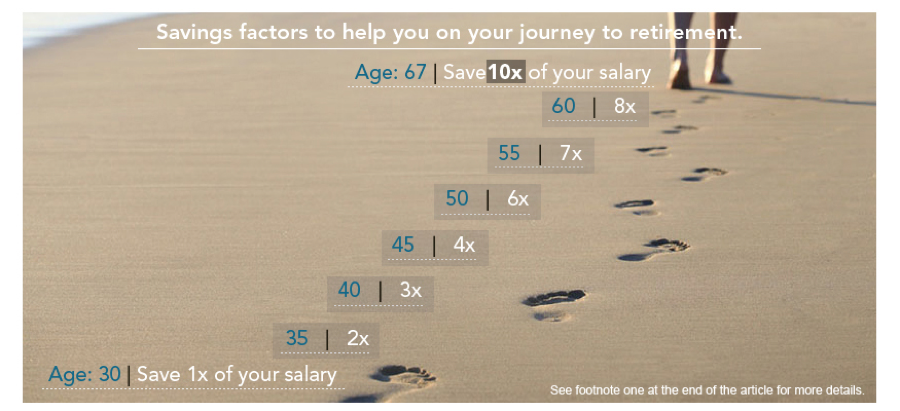Saving for retirement is already a daunting task, but new savings guidelines from fund giant Fidelity Investments will make the old ones seem like a breeze.
Last month, Fidelity upped its guidelines for retirement savings to recommend that an individual should save the equivalent of their annual salary by the time they turn 30. By the time they’re 35, they should have double their salary in retirement savings. By 40, that total should be three times a person’s salary. The target numbers continue to grow until age 67, when an individual should have 10 times their pay in retirement savings.
Gulp.
Related: Here’s Why More Baby Boomers Won’t Enjoy Retirement Like Their Parents
The old rules of thumb advised workers to save an amount equal to their salary by age 35 and eight times their salary by age 67 in order to have reasonable financial security in retirement.
Even these more modest guidelines were difficult for most Americans to meet. Around 55 percent of people are at risk of not having enough money saved to completely cover necessary retirement expenses, like housing, health care and food, according to Fidelity Investments’ own study.

Fidelity recognizes that not everyone can save such a large portion of his or her paycheck and that the average American isn’t setting aside this kind of money. But much as medical guidelines say people should visit their doctors, eat a balanced diet and exercise regularly in order to lead a healthy lifestyle, Thompson says, following these financial recommendations improve the chances of successful retirement planning.
“These are rules of thumb meant to give people a quick gauge. It’s important to understand where you’re at, but these are a broad set of guidelines that apply to many people,” says Jeanne Thompson, a vice president at Fidelity.
Related: Ready for Retirement? Americans Saving More, but Still Not Enough
One of the reasons Fidelity update its benchmarks was so that they would apply to a wider group of workers. The previous guidelines were based on individuals making $70,000 a year, but the new ones were designed for anyone earning between $50,000 and $300,000 a year.
The revisions also reflect a more conservative expected rate of return. Instead of assuming a rate of return of 5.5 percent a year, the firm now assumes savings will grow by 3 percent a year on average. The goal of the new guidelines is to allow savers to amass enough money to replace 45 percent of their pre-retirement income.
These changes are a result of Fidelity using past market performance to simulate what the market might do in the future. “Had you followed these guidelines in historical markets, you would’ve had more success in savings,” says Thompson.
Related: 7 Common Myths that Can Ruin Your Retirement
Fidelity also recommends that people set aside at least 15 percent of their pay throughout their careers, including any employer contributions to retirement plans. Thompson emphasizes the importance of taking the company match on 401(k) plans, because not doing so is “like leaving free money on the table.”
If you’re far below that goal, Thompson suggests trying to increase your savings by 1 percent a year until you get to 15 percent. If the new Fidelity guidelines give you a scare, that may be a less-daunting way to start toward better retirement security.





